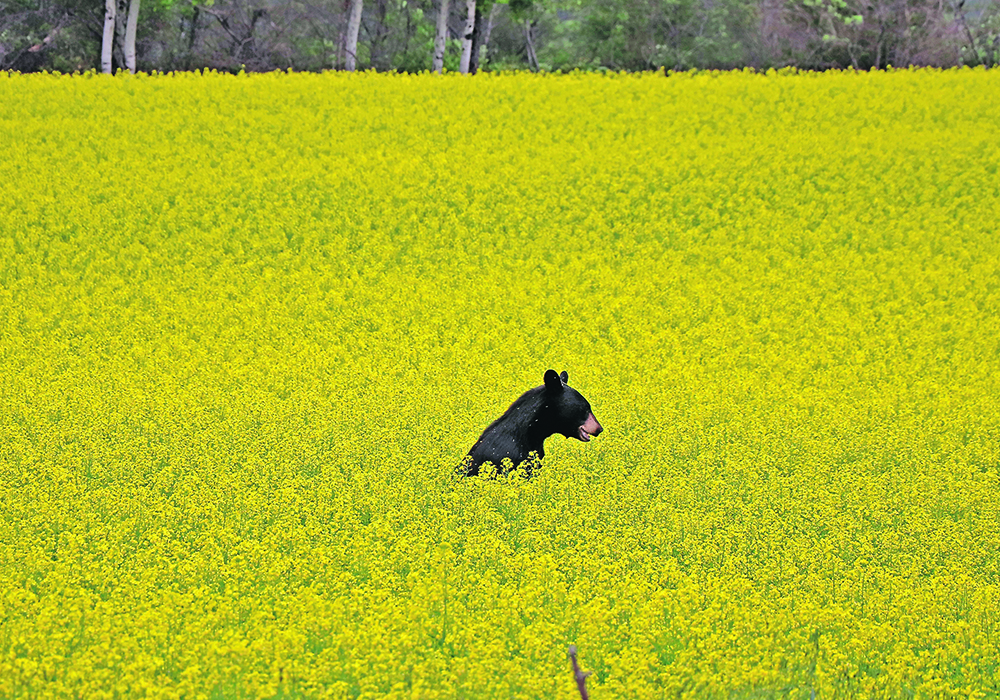U of A researcher studies the impact that large parasites such as flukes, tapeworms and flatworms have on wildlife health
The impact of parasites on wildlife health is likely much greater than is considered under existing conservation management strategies, said a researcher.
Worm-like helminth parasites can also affect livestock and humans, said Kyle Shanebeck, a PhD student in the University of Alberta’s Department of Biological Sciences.
“Parasitism is one of the most common lifestyle strategies of any organism. There are parasites literally everywhere.”
All wildlife has likely been infected by at least one parasite, and often by multiple ones, he said.
“It’s one of those things if you study wildlife and you ever do necropsies, at some point you will find parasites. It’s just the reality of life.”
Read Also

Canadian Food Inspection Agency extends chronic wasting disease control program consultation deadline
Date extended for consultation period of changes to CWD program
Shanebeck recently led a study into the impact of helminths, which include large parasites such as flukes, tapeworms and flatworms, on wildlife health.
As a scientist who looks at parasites in otters, he became curious about what effect they were having on wild mammals in general. However, the scattered, uncontrolled nature of wildlife populations makes it difficult for researchers to pinpoint the impacts, which are relatively subtle compared to diseases caused by microbes, he said.
Shanebeck analyzed 142 previous studies that included agricultural livestock research, indicating that parasites negatively affect the total body health of their mammal hosts, including functions such as growth, repair, environmental adaptability and reproduction.
Parasites consume carbohydrates that would otherwise have gone to their hosts, altering how the gut of infected animals produces and absorbs nutrients.
“If you do not have the energy resources you need, you may not be able to reproduce effectively, or as many or as successfully, and that’s really what we would tend to care more about in population biology of mammals.”
Other harmful effects can range from diarrhea and lower body weight to suppressing or weakening the immune system’s ability to fight diseases, “but one of the most common things that they do is they’ll actually change our behaviour,” said Shanebeck.
These changes most often occur in intermediate hosts of helminth parasites, he said, pointing to trematodes or flukes that cause animals such as infected snails to rise to the top of grass. They are subsequently eaten by sheep, goats and cattle, where they live off their hosts’ fluids and tissues and damage internal organs.
The World Health Organization estimates that more than 1.5 billion people, or about one in four around the world, have soil-transmitted helminth infections. People with large numbers of the parasites can suffer from malnutrition, general malaise and weakness, and impaired growth and physical development.
The bodies of infected mammals are like power grids that redirect energy when faced with a supply challenge, said a university statement.
However, conservation efforts to improve population health in wildlife usually target often fatal pathogenic diseases that can spread between species as well as from animals to humans, it said.
“Parasites, on the other hand, don’t kill their hosts, so they tend to be ignored in conservation and management models.”
With no consistent way to assess data, Shanebeck and his team created a set of protocols and applied an analytical framework for parasite effects based on the health and body condition of animals, said the statement. The 142 studies documented 599 effects of helminths in wild, laboratory and domesticated mammals.
The researchers hope the guidelines will promote changes in best practices for research projects looking at helminth worms in wildlife populations.
“This is important for conservation management because we are trying to highlight a missed area, one that is probably a more important aspect of population health and survival.”
















